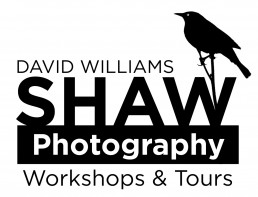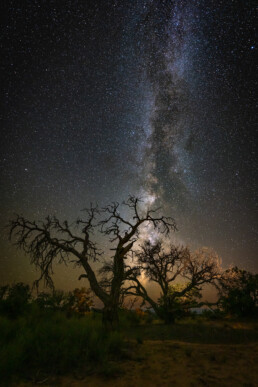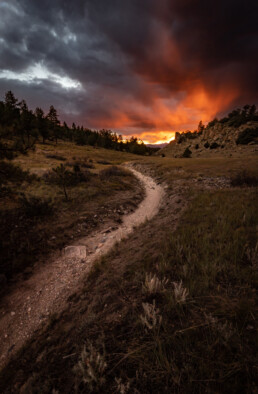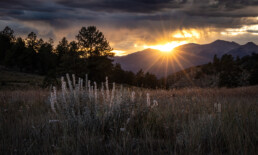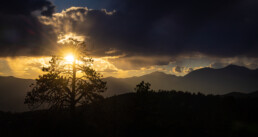In my autumn newsletter, I posed a question: What would you think about a monthly series of emails that would discuss the art of photography? The resounding feedback, was, “I think that would be great!”
So, this morning the first edition of that new email went out. But for those of you who don’t want another email each month, I’ve decided I will also publish each edition here on the Explore Journal within a day or two of its release via email.
However, if you haven’t, I encourage you to sign up for the email. There is more in there than just the article below, and as I always send my emails first thing in the morning, it’s pleasant to start your day with a thought-provoking article about creativity and photography. You can sign up for the emails HERE.
The Photography Experience - Issue 1
Welcome to the first issue of my new monthly series: The Photo Experience
In my autumn newsletter, I asked for input on whether you’d like hear more from me about photography and my approach to the art. First, thanks to the many of you who responded with feedback, and I’m flattered that it was unanimous that you’d like to read more.
This series of emails, has been split from my standard newsletter. So if you do not want to receive this, but would like to continue reading my quarterly newsletter, just click unsubscribe at the bottom, and you can select to be removed just from this mailing.
For this first edition, I thought I’d start with what it means to travel, and how to decide what to take when we do.
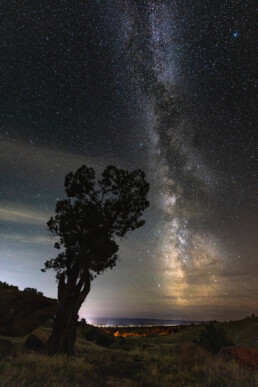
I’ve recently returned from a few days in the western Colorado and Utah desert. This is an area I’ve visited many times, but photographed relatively little. On this trip, thanks to my recent surge in creativity, I put my cameras to use.
Why Photographers Should Travel
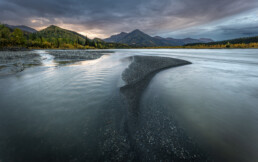
Novelty inspires.
When I was a teenager, I took an Outward Bound course in the mountains of Colorado. The 17-day trip was life-changing in many ways, and I emerged with a passion for the outdoors and adventure that persists 30 years later. Early in that trip, one of the instructors sat us down and drew a set of concentric circles into the dry brown soil with his fingertip. He pushed a divot into the very center and said, “This is the most comfortable place you can imagine.” Then he pointed to the outermost circle, “Here is the most challenging environment you’ve ever experienced.” The interior circles represented our comfort zone, the places where we are content, and life is generally easy. In those outer circles, however, things get harder. The further we venture from the center, the more emotionally and/or physically difficult our experience becomes. Adding more rings to our experience, by taking on challenging adventures or diving into powerful emotional journeys puts the rest of our lives in a new, healthier, perspective.
Years later, I look back at that analogy and realize it applies to photography as well. I produce my best images when I’m in the middle to outer rings of my comfort zone. The inner rings are too easy, too familiar, and do not challenge me to create. The outermost rings, however, while improving my overall experience, require too much mental or physical energy and leave behind little room for creativity or inspiration while in the thick of it. But the outer 2/3rds of the zone? That’s where the magic happens.
And indeed, it can feel like magic. Psychologist Mihaly Csikszentmihalyi in his wonderful book Flow describes artists and creators doing their best work when engaged in “a voluntary effort to accomplish something difficult and worthwhile.” In other words, it’s only when we push ourselves beyond what we would normally find comfortable that we find the freedom of creativity and inspiration.
And that’s where travel comes in. Travel, regardless of the physical comfort of the experience, pulls us away from what is familiar, and drops us into strange and novel environments. Our minds are forced to work double-time to navigate through these new places, and with that extra effort, comes a level of creativity you are unlikely to experience at home.
The benefit continues after your travel experience ends. I find that upon return from an inspiring trip, my creativity remains high for a long period after. For example, I had a very productive autumn season in Alaska. Each trip had people and places that inspired me and pushed me creatively. When I returned to Colorado, I remained enthusiastic to create images, edit, and write. And in the weeks I’ve been home, I’ve created some of my favorite images of this part of the world.
This doesn’t mean you have to travel great distance or spend huge amounts of money. You just need to escape your own normal. That might be as simple as a walk in a different neighborhood, or on a new trail, you haven’t explored before. Whether you choose a trip to Botswana or a hike in a nearby park, it must challenge you, at least a bit.
I encourage you to try it and let me know what you discover on your journey.
Below are a few images I’ve created here in Colorado since my return from Alaska a few weeks ago.
On Packing – Decisions, Decisions
I leave for Botswana in just a few days and I’m mentally running through packing checklists, considering photo gear, what I need to purchase, and how to actually get it put away in my bag.
Traveling long distances forces me to approach packing differently than I might on a car-based journey from home. On a road trip, I’m more likely to be headed out with about everything I could ever need: a half dozen lenses, a couple of bodies, two tripods (light and heavy), a monopod, ball-heads, gimbal head, polarizers, and variable neutral density filters, a couple of flashes and remote triggers, and a drone. Two full packs worth.
I pack all that stuff “just in case”, and 90% of the time I don’t touch half of it. Mostly, bringing it all saves me the trouble of deciding what I need and what I don’t. But it’s also a problem.
More than once, I have watched over-packed photographers on my workshops spend long minutes digging through their camera bags, while the light is fading or the wildlife is slipping off into the woods. If the amount of gear you are carrying impedes your ability to quickly get to what you need, and create your shot, it’s a hindrance to your photography, not an asset.
On a journey halfway around the world, however, I’m space and weight limited. I don’t want to carry anything more than I have to. I need to be able to comfortably handle my own photo equipment and personal gear without assistance. That means I carry a good-sized camera bag and a wheeled duffle for the non-camera gear.
So what’s my photo kit look like for a month in Botswana? Here is a photo of everything ready to go:
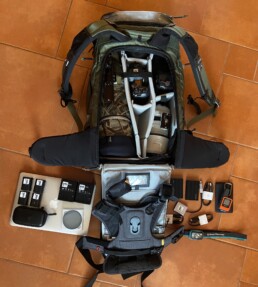
It includes: 2 Canon R5 bodies, Canon 600mm f4, Canon 100-500, Canon 24-105 f4, Sigma 14-24 f2.8, Travel tripod, Circular Polarizing Filter, Cotton Carrier harness, Card wallet with an abundance of SD and CF Express cards, Card reader, two 2TB Steady-state hard drives, and a Macbook Air laptop.
All of that will fit (with careful packing) into my F-Stop Tilopa pack, which not coincidentally, will also fit the overhead compartment on an airplane.
With each piece of gear, you should ask: “How likely am I to use this?” and just as importantly “How much will I regret leaving it behind?” If your answers are Not Very and Not Very, then ditch it.
On a landscape trip, I’d remove the 600mm f4 (that thing is a beast), and replace the 100-500 with a 70-200 f2.8. The focus of your trip should dictate much of the gear you are carrying.
When I’m hiking, that amount of gear gets trimmed farther. A day hike might include a body, a wide angle, a compact telephoto, and maybe a travel tripod. That leaves room in my bag for the other necessities a day (or days) in the backcountry will require.
The point is to assess your gear and the likely opportunities your trip will provide, and not carry more than is required. While I’m no minimalist, I’ll usually err on the side of leaving an item behind, rather than lug a never-used piece of gear halfway around the world and back.
Like all aspects of photography, your kit warrants consideration. You probably NEED less than you carry, so as you plan for your next excursion take a moment to ask yourself whether you’ll use an item, or whether you are just afraid to leave it behind.
